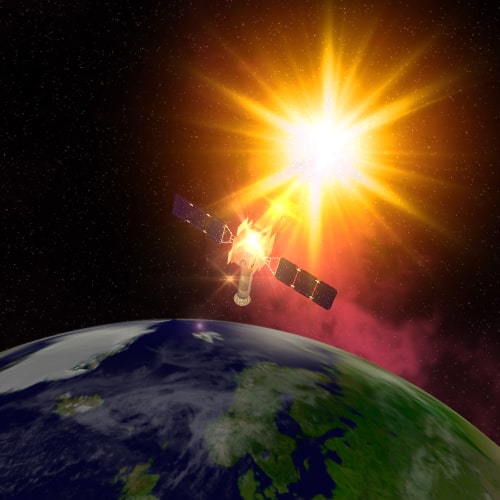Since the beginning of our journey, we dedicated our activities and concentration in the area of practical applications of advance control design techniques for space applications. This includes spacecraft guidance, trajectory planning, integrated satellite guidance and control using nonlinear sliding mode design methods, adaptive neural network-based control for space applications, robust control of motion-based space flight simulator, and more. Up to now, we continue spending time in the area of guidance, navigation, and control (GNC), and we are exploring the advantages of using advance nonlinear control methods for controlling space vehicles in variety of space missions. Our goal is to regain performance of complex space systems, while using advanced control methods.
Space have identified the development of automated in-orbit operations as a key requirement for future space mission advances, including space interferometry emulating very large aperture telescopes, large inflatable and deployable antennas, solar sails and large solar power systems. Such a strategy enables the assembly of larger structures out of smaller components, which in turn overcomes the mass and volume limits associated with the fairing of many launchers. In addition, human presence for future space construction is impractical from risk and cost perspectives.
Following this fact, the interest in autonomous proximity assembly operations has increased in recent year, and autonomous assembly and proximity operations have shown to be an important phase, while future missions to the space stations will require perfect autonomous assembly and proximity operations. Based on this need, we dedicate our effort in development of the guidance and control system for autonomous in-orbit operations of single and multiple satellites in close-range and long-range rendezvous.
The guidance and control algorithms that we develop for multi-satellite are general and can be used for a circular orbit as well as an eccentric orbit. We propose guidance algorithms for glideslope transfers to decelerate each satellite in the assembly while approaching its intended final location. Furthermore, our methods consider the finite body size of the satellite (including private parts such as appendages, antennas, and solar arrays) in the assembly. We propose control algorithms which are developed based on multi-impulse discrete control techniques, utilizing the closed form analytical solution. Our algorithms are designed to ensure collision avoidance during the assembly maneuvers.



